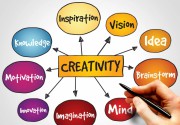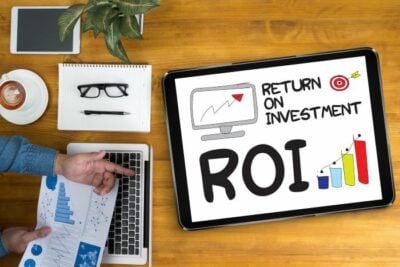
Hoarder cleanup is a task that demands patience, empathy, and a systematic approach. Not only does it involve physical labor, but it also requires understanding the emotional complexities associated with hoarding disorder.
Come along as we explore the intricate world of hoarding, unraveling its complexities and discovering strategies for a successful cleanup.
The Psychology Behind Hoarding
Hoarding disorder is an acknowledged mental health condition where individuals struggle to let go of personal belongings, regardless of their intrinsic value.
According to the American Psychiatric Association, those affected by this disorder encounter intense distress when considering parting with their belongings, resulting in an accumulation that disrupts their living conditions.
The disorder is not merely about being disorganized; it's often linked to other mental health disorders like depression, anxiety, and obsessive-compulsive disorder (OCD). The act of hoarding can result in living conditions that are unsafe and unclean, posing health risks to the individual.
Understanding hoarding disorder is key to approaching cleanup in a sensitive and effective manner, recognizing that it's not simply about clearing a physical space but also addressing a complex psychological issue.
The Top Signs of Hoarding Disorder
Recognizing hoarding disorder as an intricate mental health condition is crucial, and understanding common signs is key to identifying and supporting those in need. Here are some common signs of hoarding disorder based on various expert sources:
- Persistent Difficulty Discarding Possessions: Individuals with hoarding disorder have ongoing difficulty parting with possessions due to a perceived need to save them.
- Excessive Accumulation of Items: People with this disorder often acquire excessive items, even those that appear random or lack value.
- Severe Clutter: The accumulated items often result in severe clutter that disrupts living spaces.
- Emotional Distress: There's significant emotional distress associated with discarding items.
- Chaotic Storage: Items are usually stored in a chaotic manner, resulting in unmanageable amounts.
Remember, hoarding disorder is a serious mental health condition that requires professional intervention. If you or someone you know exhibits these signs, it's crucial to seek help from a mental health professional.
The Consequences of Hoarding
Some of the repercussions of hoarding disorder include:
1. Health Hazards
Hoarder homes often harbor health hazards such as mold, mildew, pests, and unsanitary conditions. These factors can lead to respiratory issues, infections, and other health problems for both the hoarder and anyone living in or visiting the home.
2. Strained Relationships
Living with a hoarder can strain relationships with family members and friends. The clutter and chaos can make it difficult for loved ones to visit or even communicate effectively, leading to isolation and loneliness.
3. Fire Hazards
Piles of clutter and the presence of flammable materials can create a significant fire hazard. In hoarder homes, fires can spread rapidly and cause severe damage or loss of life.
4. Legal Issues
In extreme cases, hoarding can lead to legal problems, such as code violations, eviction, or loss of custody of children. It's essential to address hoarding issues before they escalate to this level.
Where to Start: A Step-by-Step Guide
Dealing with hoarding disorder might feel overwhelming, but with a systematic strategy, it becomes more manageable. Explore this comprehensive step-by-step guide to kickstart your hoarder cleanup journey:
1. Assessment and Planning
Initial Steps
The hoarder cleanup process kicks off with a thorough assessment of the situation. This crucial step is indispensable for comprehending the scope of the hoarding challenge and establishing a plan for effective cleanup. Follow these steps:
- Consult with Professionals: Get in touch with mental health experts, social workers, or hoarding cleanup specialists. They offer valuable advice and evaluate the extent of the hoarding issue.
- Safety First: Prioritize safety during the assessment. Identify any immediate hazards, such as blocked exits or fire risks, and address them promptly.
- Evaluate the Emotional State: Understand the emotional state of the hoarder. Approach them with empathy and compassion to establish trust and cooperation.
Building Trust and Cooperation
Establishing trust and cooperation with the hoarder is crucial for a successful cleanup. Hoarders often feel shame and anxiety about their situation, making them reluctant to accept help. Here's how to build rapport:
- Non-Judgmental Approach: Avoid criticizing or blaming the hoarder. Be understanding and non-judgmental to create a safe environment for them to open up.
- Therapy and Counseling: Support and motivate the hoarder to consider therapy or counseling. These resources can help them tackle the emotional issues at the root of their hoarding behavior.
- Involve Family and Support Networks: Engage family members and support networks to provide emotional support and reinforce the importance of cleanup.
2. Sorting
Categorizing Possessions
Sorting and organizing possessions are fundamental steps in hoarder cleanup. It's essential to help the hoarder decide what to keep, donate, or discard. Here's how to approach this step:
- Start Small: Begin with a small, manageable area to avoid overwhelming the hoarder.
- Use a System: Develop a system for categorizing items. Consider using color-coded bins or labels to identify, keep, donate, and discard items.
- Emotional Support: Understand that this process can be emotionally challenging for the hoarder. Provide emotional support and encouragement throughout.
3. Cleaning and Disinfecting
Health Hazards
Hoarding can lead to unsanitary conditions, posing significant health risks. Cleaning and disinfecting are critical aspects of hoarder cleanup. Here's what you should consider:
- Safety Gear: Ensure that the cleanup crew, including professionals if hired, has appropriate safety gear, including masks, gloves, and protective clothing.
- Thorough Cleaning: Clean and disinfect all surfaces thoroughly to remove dirt, dust, and potential contaminants.
- Dispose of Hazardous Materials: Dispose of hazardous materials, such as expired medications or chemicals, in a safe and environmentally responsible manner.
4. Maintaining Progress
Sustaining a Clutter-Free Environment
Once the cleanup is complete, maintaining a clutter-free environment is essential to prevent relapse. Here's how to sustain progress:
- Regular Organization: Establish a routine for regular organization and decluttering to prevent the accumulation of items.
- Family Involvement: Encourage family members to actively participate in maintaining a clutter-free space.
- Ongoing Therapy and Support: Continue therapy and support for the hoarder to address underlying emotional issues and provide a safety net.
Preventing Relapse
Hoarding can be a recurring issue, so it's vital to implement strategies to prevent relapse:
- Identify Triggers: Help the hoarder identify their triggers for hoarding behavior, such as stress or anxiety.
- Stress Management: Teach stress management techniques and coping strategies to deal with triggers effectively.
- Regular Check-Ins: Schedule regular check-ins with mental health professionals to monitor progress and provide additional support when needed.
Remember that it's a process that requires patience, empathy, and ongoing support. With the right approach and professional assistance, individuals struggling with hoarding disorder can reclaim their living spaces and improve their quality of life.
The Role of Professional Help in Hoarder Cleanup
Professional help plays a critical role in hoarder cleanup. This isn't just about physical cleanup but also addressing the underlying mental health disorder associated with hoarding. Professionals trained in dealing with hoarding situations approach the task with sensitivity, understanding, and expertise.
They can skillfully sort, organize, and remove items, all while understanding and honoring the person's emotional ties to their belongings. Additionally, they have the expertise to manage biohazards and extensive clutter, addressing potential health and safety concerns.
Moreover, mental health professionals can provide necessary therapeutic interventions, such as cognitive-behavioral therapy, which is considered effective for hoarding disorder. They can help individuals understand their behaviors, develop decision-making skills, and implement strategies to prevent relapse.
Thus, professional help is not only beneficial but often essential in hoarder cleanup, addressing both the physical clutter and the psychological aspects of the disorder.
Create a Healthier, Happier Living Space
Hoarding is a complex and debilitating disorder that affects millions of individuals worldwide. It takes a substantial emotional toll on those who experience it and their loved ones. Recognizing the signs and understanding the psychology behind hoarding is the first step toward helping those in need.
Remember, empathy and compassion are key when approaching hoarder cleanup. With the right resources and support, recovery is possible, and individuals can once again enjoy the benefits of a clutter-free and emotionally healthy life.









Comments on " Hoarder Cleanup: Where to Start and How to Tackle It" :